Renaissance Women
Women Portrayal in the Italian Renaissance during the Late 14th to 15th Century
Category Archives: Exhibition
Idealized Portrait of a Lady
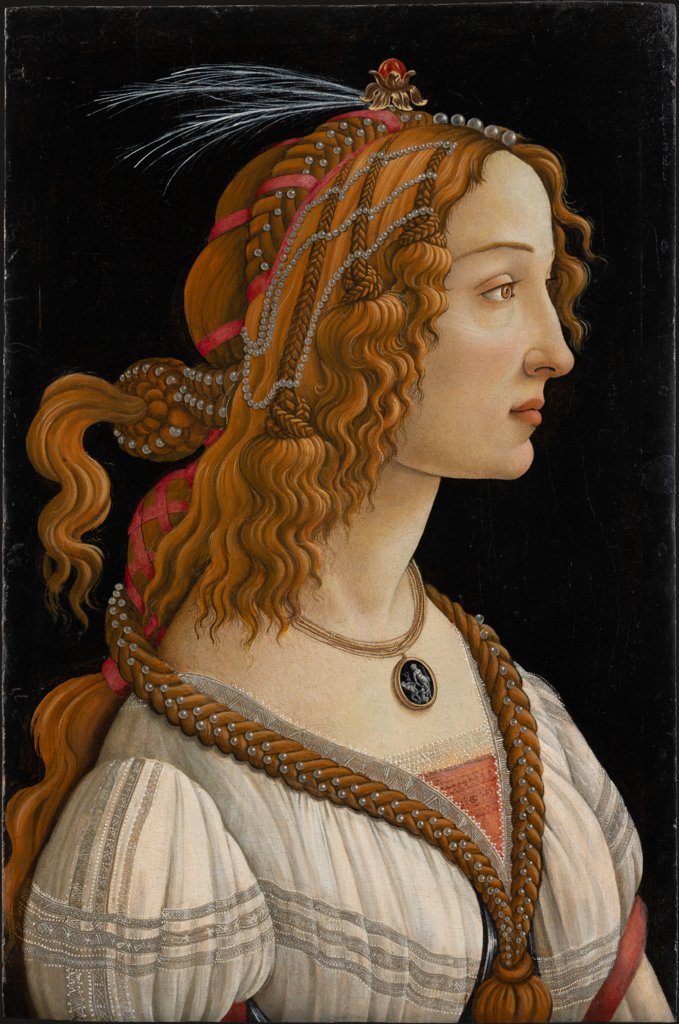
Idealized Portrait of a Lady (Portrait of Simonetta Vespucci as Nymph) by Piero di Cosimo, 1480-1485, 184.1 x 68.5 cm, oil on wood, National Gallery of Art, Washington D.C.
The Ideal Portrait of a Lady by Sandro Botticelli made after 1475, was a portrait representing the image of desirable woman. The woman was believed to be modeled after Simonetta Vespucci who was thought to be the most beautiful woman in Italy. The sitter of the painting has long blonde hair with pearls, a detailed gown, and a deep blue necklace to symbolize her extreme wealth. Her soft features contribute to her desirous looks. The side profile portrait was very common since it resembles the Roman coinage and allows the viewer to admire her beauty without opposition or shame.
The Wedding Feast at Cana
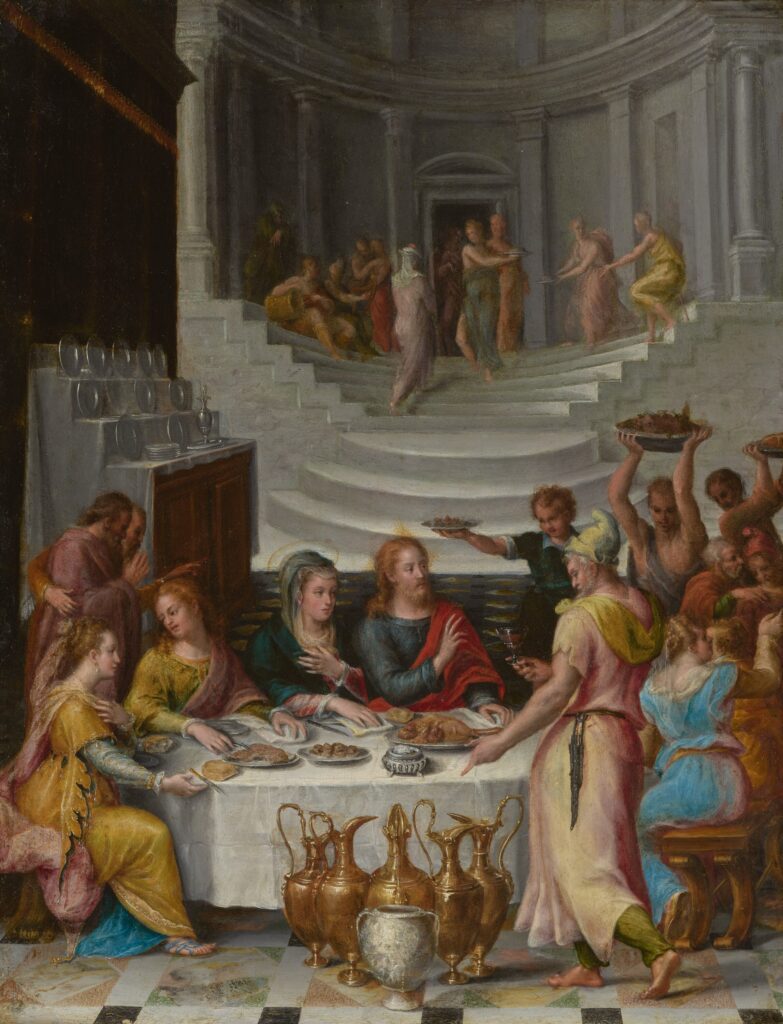
The Wedding Feast at Cana by Paolo Veronese, c. 1575-1580, 22ft x 32ft, colossal oil on canvas painting, the collection of the Musée du Louvre in Paris.
Lavinia Fontana was one of the first successful female artists in Western Europe. One of her most famous works was The Wedding at Cana in circa 1580. The painting depicts the miracle in which Jesus turned water into wine at the request of his mother. Saint Mary is in the center of the painting with Jesus to demonstrate her holiness and Saint Mary’s presence in the painting also sets a remainder of women’s important role in the story of Jesus. Jesus has his hands raised because that is the moment when he performed the miracle. The gold vases in the foreground of the painting are also an indication of the miracle.
La Bella in Blue: A Timeless Beauty
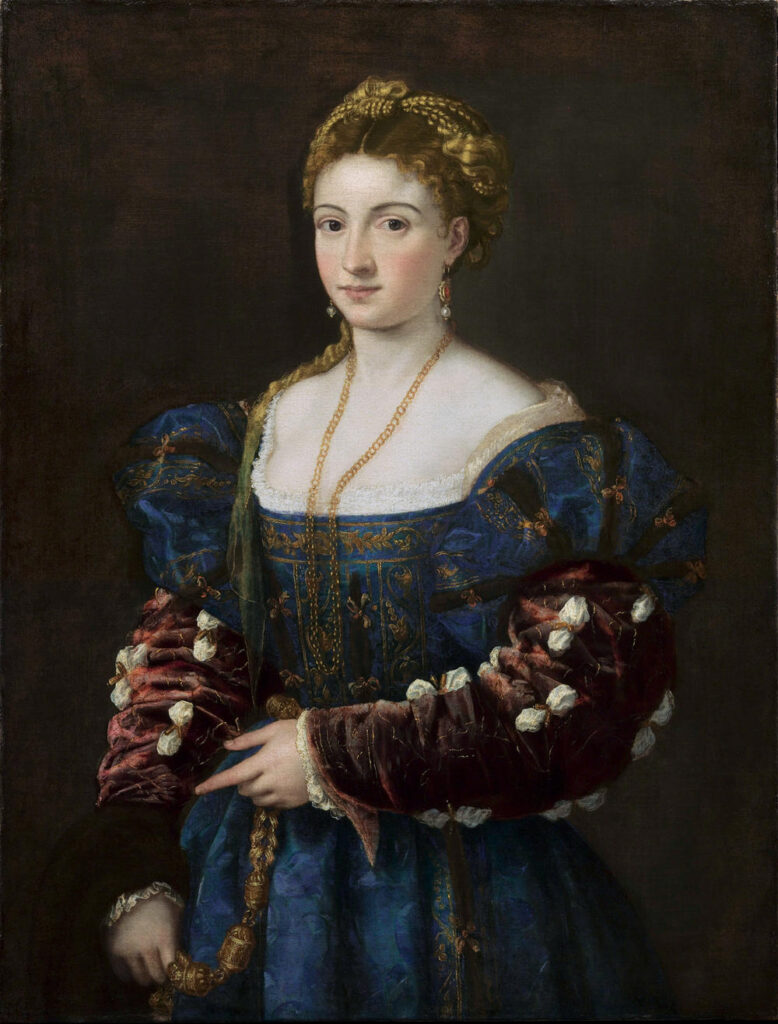
“La Bella in Blue: A Timeless Beauty” by Titian, 1536, 71.5 x 57 cm, oil on canvas, owned by the Palazzo Pitti, Florence.
Tiziano Vecellio’s La Bella (Woman in a Blue Dress) 1536 was an iconic painting of its time, it was original commissioned for Duke of Urbino, who was a mercenary military leader in Florence. The woman adheres to the standards of the time through her long blonde hair, pale complexion, rose lips and soft features. It can be inferred that she is very wealthy because of her extravagant gown and long gold chain. Her gown’s gold detailing, big sleeves and bright colors convey the purpose of the portrait is to be desirable. The dress has a low cut yet does not reveal any cleavage, veering between sensuality and not being overly sexual. The woman is also slightly facing the side looking directly at the audience creating a sense of intimacy.
The Birth of Venus
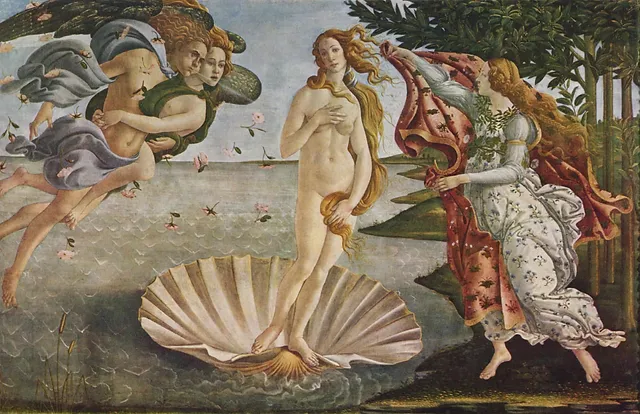
“Birth of Venus” by Sandro Botticelli, c. 1486, 172.5 cm x 278.5 cm, tempera on canvas, owned by the Uffizi Gallery in Florence.
The Birth of Venus by Sandro Botticelli depicts the ancient Roman belief system, conveying Italy’s admiration for the Roman empire. Venus, the God of love, arises from the shore on a seashell because she was born of seafoam. The man blowing her to shore carrying a woman is Zephyr the god of wind, and his wife Chloris. The woman to the right is an admiral welcoming her to land. Through Botticelli’s painting Venus symbolizes the standards of beauty. For she has soft features such as a round face, pale skin and long blonde hair. Venus is nude to contribute to her sensuality and please the male audience.
Mona Lisa

Leonardo da Vinci’s “Mona Lisa,” created in 1503-06, is a 30 x 21 inch oil on poplar panel masterpiece housed in the Louvre Museum in Paris, France.
The Mona Lisa by Leonardo da Vinci is considered one of the most iconic pieces of art from the renaissance period. For it differs from the portraitures from this era, since rather than focusing on the sitter’s appearance her personality is accentuated. With her mischievous grin and direct eye contact with the audience. Her wardrobe is also less glamorous and more toned done. Da Vinci used the technique sfumato, the blending of colors, made the image more lifelike and Contributed to the beauty trend of woman having soft features. There is also a theory that a sketch Monna Vanna found in Leonardo da Vinci’s studio was of Mona Lisa depicted in nude. Which could be an indication that she was supposed to originally be in the nude.
Portrait Group with the Artist’s Father and Siblings: Amilcare Anguissola, Minerva, and Astrubale

Portrait Group with the Artist’s Father and Siblings: Amilcare Anguissola, Minerva, and Astrubale, by Sofonisba Anguissola, c. 1559, oil on canvas, held in the National Museum of Fine Arts, Buenos Aires.
Sofonisba Anguissola often painted her family, this painting is of her father and younger siblings. The father embraces his son presenting him to the audience, while his daughter looks over at him in the corner unacknowledged. The youngest daughter is holding a bouquet of flowers indicating that women’s purpose is to be beautiful just as flowers she holds. All individuals are wearing extravagant clothing, the youngest daughter costume ties in the red her brother is wearing and the blue from the background. The left corner of the painting is unfinished because the artist suddenly moved because King Philip II of Spain gave her a position to be the lady in waiting for the new queen. Anguissola worked for the Spanish court for twenty years as a drawing teacher and made portraits for the royal family.
The Chess Game: A Masterful Display of Strategy and Skill

“The Chess Game: A Masterful Display of Strategy and Skill” by Sofonisba Anguissola, 1555, 72.5 x 97 cm, oil on canvas, Pinacoteca di Brera in Milan, Italy.
The Chess Game by Sofonisba Anguissola in 1555, shows a group of sisters playing a lively game of chess. This painting differed from other depictions of women from this era since it conveyed women as intelligent beings rather than aesthetic objects. The wide range of emotions in the image adds to the uniqueness of the piece. The younger sister on her right has her hand raised, conveying she is protesting her older sister’s decision in the game almost as if they are about to argue. The older sister is looking directly at the audience as if we are intruding on their game, her face is taunting us. The youngest sister is smiling, amused by the bickering of her family. The maid on the right appears to have a disgruntled look as if she is annoyed by the chaos.
Mars and Venus United by Love
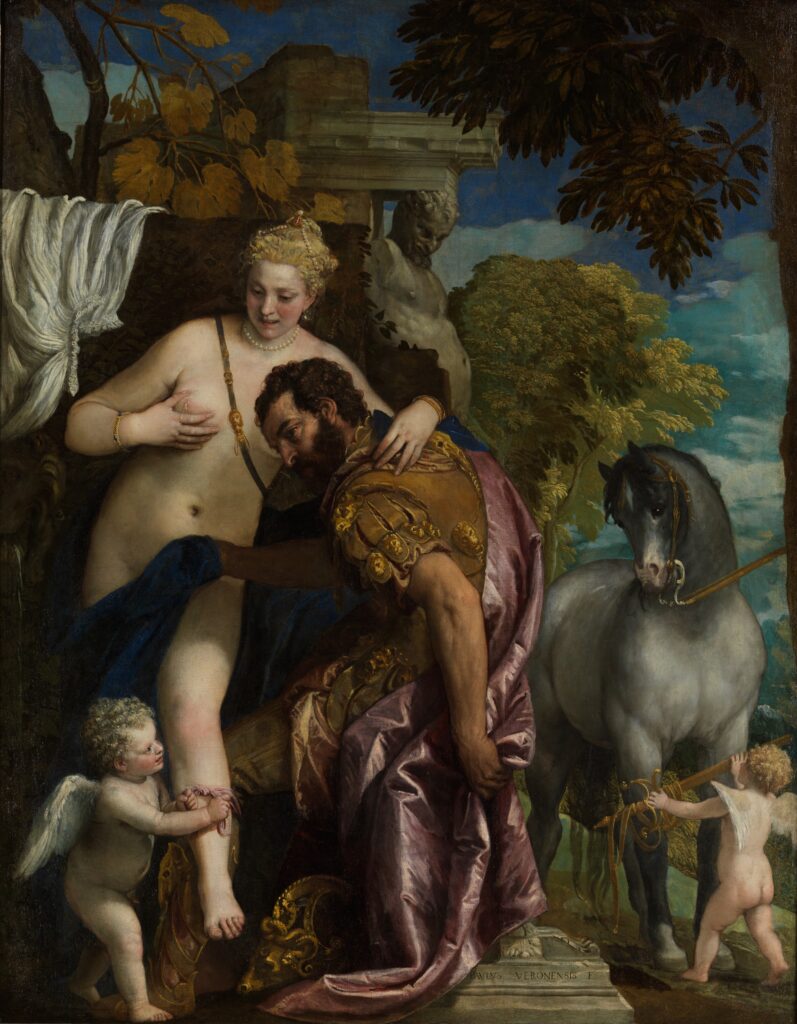
Paolo Veronese- Mars and Venus United by Love. Painting, 1570s, 81 x 63 3/8 in., Metropolitan Museum of Art, New York, NY
Mars and Venus United in Love by Paolo Veronese symbolizes their union ship as lovers and the tranquility of love. Venus is nude squeezing her left breast to make herself appear more desirable. She also shares the same features that fit into the Italian Renaissance’s beauty standards. Since she is blonde, has blue eyes, fair skin, is hairless and has a round forehead. Which differs Mars’ hairy face, tone body and strong facial features. Venus is also seen leaning on Mars while cupid unities them through the love knot. Mars’ strong features contrasting Venus’ elegant appearance is an indication in the difference of standards between the genders.

